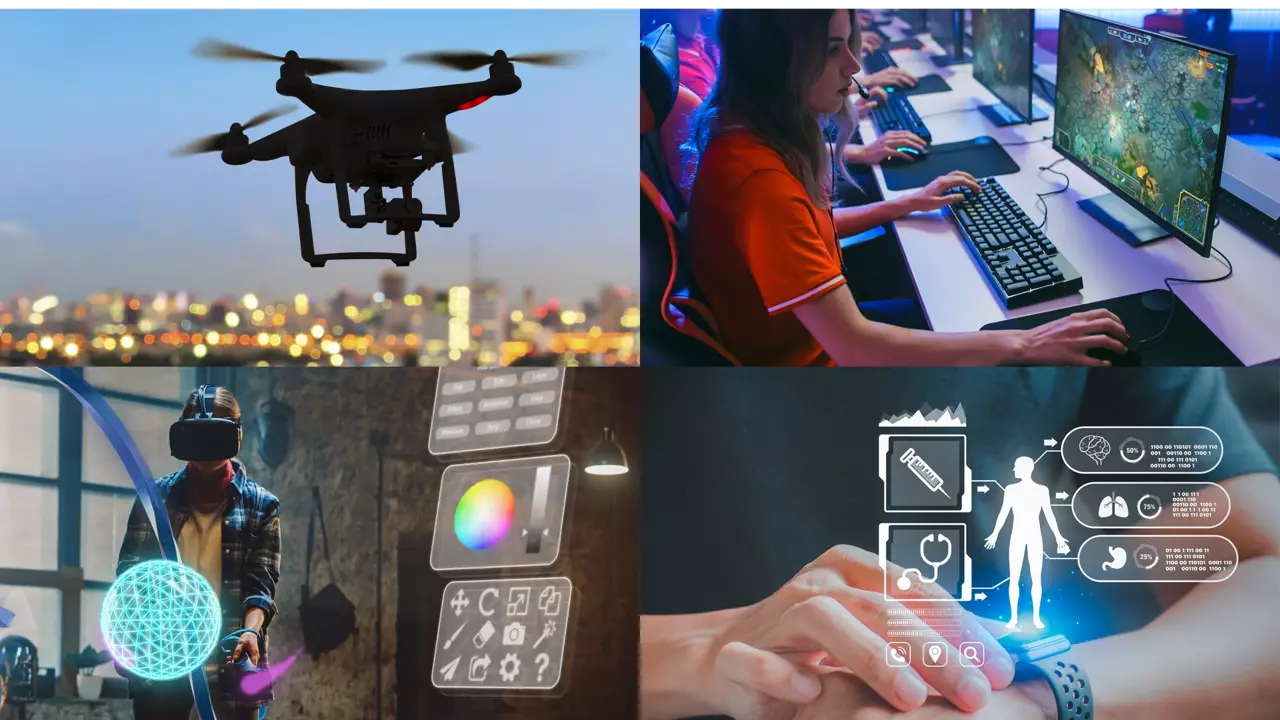Time: 2025-04-21 11:59:56View:
Field-Programmable Gate Arrays (FPGAs) are highly flexible, reconfigurable semiconductor devices that are particularly well-suited for adaptable, high-performance applications in consumer electronics. Unlike fixed-function ASICs (Application-Specific Integrated Circuits), FPGAs can be reprogrammed after manufacturing, making them ideal for prototyping, rapid product development, and customized solutions.

FPGAs are widely used in devices requiring real-time image processing:
Smart TVs & 8K Displays:
Accelerating video upscaling (e.g., AI-based image enhancement)
Supporting HDMI 2.1 and AV1 decoding
Virtual Reality (VR) & Augmented Reality (AR):
Low-latency image processing for headsets (e.g., Oculus Quest, Microsoft HoloLens)
Real-time motion and object tracking
Voice Assistants (Alexa, Google Assistant):
Accelerating AI-based speech recognition algorithms
Noise cancellation for clear voice transmission
High-End Audio Systems:
Digital Signal Processing (DSP) for lossless audio playback
Gaming Consoles (e.g., PlayStation, Xbox):
Optimizing graphics pipelines for faster rendering
Emulating legacy consoles (FPGAs enable hardware-accurate replication)
Gaming Peripherals:
Customizable RGB lighting control with ultra-low latency
AI-Powered Cameras:
Real-time object detection for security systems
Edge computing for privacy-friendly local processing
Energy Management Systems:
Dynamically controlling appliances to optimize power consumption
Smartphones:
Accelerating AI features (e.g., photo optimization)
Fast charging with adaptive power management algorithms
Medical Wearables:
Real-time ECG/EEG signal processing with high precision
| Criterion | FPGAs | ASICs | Microcontrollers |
|---|---|---|---|
| Flexibility | ✔️ Instantly reprogrammable | ❌ Hardwired | ⚠️ Limited customization |
| Performance | ✔️ Parallel processing capability | ✔️ Highest efficiency | ❌ Slower |
| Power Consumption | ⚠️ Higher than ASICs | ✔️ Optimal | ✔️ Very low |
| Cost | ⚠️ Expensive in mass production | ✔️ Cost-effective at scale | ✔️ Very affordable |
High Development Complexity: FPGA programming requires hardware expertise (VHDL/Verilog).
Power Efficiency: FPGAs consume more power than ASICs.
✅ AI Integration: FPGAs with dedicated AI cores (e.g., Xilinx Versal).
✅ 3D Stacking: Higher performance density via vertical chip integration.
✅ Open-Source Tools: Projects like LiteX simplify FPGA development.
GoPro Cameras: Use FPGAs for real-time image stabilization.
Tesla Infotainment: FPGAs accelerate menu animations and sensor data fusion.
Samsung QLED TVs: FPGAs enable dynamic HDR optimization.
FPGAs play an increasingly vital role in consumer electronics—especially where real-time processing, flexibility, and AI acceleration are required. While ASICs are often more cost-effective for mass-produced devices, FPGAs offer unique advantages for prototyping and premium products. With advancements in AI and power efficiency, their importance will continue to grow.
Deeper dive into FPGA manufacturers and specialized use cases in consumer electronics:
Flagship Products:
Artix-7: Low-cost FPGAs for 4K video processing (used in drones like DJI)
Zynq UltraScale+: Combines FPGA logic with ARM cores (Tesla infotainment systems)
Key Advantages:
AI Engine for on-device machine learning
Vivado design suite with AI-optimized IP blocks
Flagship Products:
Cyclone 10: Power-efficient FPGAs for smart home hubs (e.g., Amazon Echo Show)
Agilex: 3D-stacked FPGAs with PCIe 5.0 (gaming peripherals with ultra-low latency)
Key Advantages:
OpenCL support for software-defined hardware
Embedded multi-die interconnect bridge (EMIB) technology
Flagship Products:
iCE40 UltraPlus: World’s smallest FPGAs for wearables (Oura Ring’s sensor fusion)
CrossLink-NX: MIPI-based FPGAs for AR glasses (e.g., Magic Leap 2)
Key Advantages:
75% lower power than competitors
Pre-programmed IP for USB-C/DisplayPort alternate mode
FPGA Role:
Lattice FPGA handles beamforming mic arrays + background noise cancellation
Enables <5ms latency for speech-to-speech translation (compared to 50ms in MCUs)
Example:
Timekettle X1 Interpreter buds using iCE40 FPGA
Implementation:
Xilinx Artix-7 processes NIR spectroscopy data at 1000fps
Identifies macro/micronutrients through AI models
Product:
Nima Gluten Sensor (FDA-approved portable food analyzer)
Technology:
Intel Cyclone V FPGAs run pixel-by-pixel aging compensation algorithms
Extends panel lifespan by 30% compared to ASIC solutions
Adopters:
LG’s 2024 G4 series with "AI Pixel" technology
Innovation:
Microchip PolarFire FPGAs enable 0.1mm precision vibration control
Simulates textures (sand, water) through adaptive PWM signals
Implementation:
DualSense Edge controller’s dynamic resistance triggers
| Parameter | FPGA (Xilinx Versal) | GPU (NVIDIA Jetson) |
|---|---|---|
| Power Efficiency | 50 TOPS/Watt | 20 TOPS/Watt |
| Latency | 0.1ms | 2ms |
| Reconfigurability | Full hardware reprogramming | Fixed CUDA cores |
| Cost (Unit @10k) | $189 | $299 |
TOPS = Tera Operations Per Second
Neuromorphic FPGAs
Intel’s Loihi 2 chips with spiking neural networks
Enables odor recognition in smart refrigerators
Quantum-FPGA Hybrids
Xilinx collaborating with D-Wave for error correction
Potential for unbreakable DRM in 8K streaming
Biodegradable FPGAs
Lattice developing sugarcane-based packaging
Targets eco-conscious wearable manufacturers
For Startups: Lattice FPGAs offer the best power/price ratio for wearables
Premium Products: Xilinx Versal leads in AI media processing
Legacy Systems: Intel Cyclone provides easiest ASIC migration path